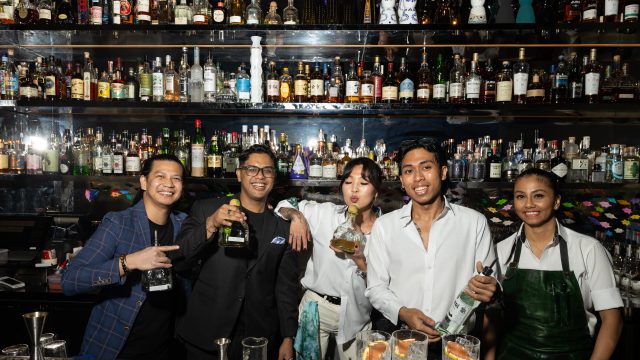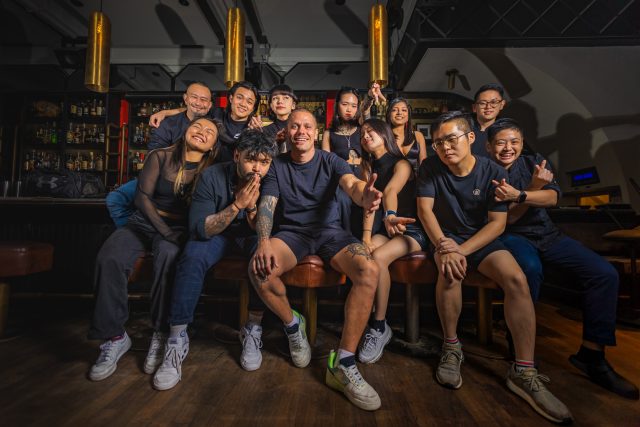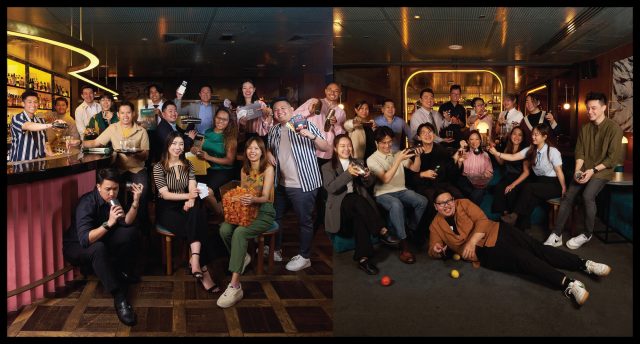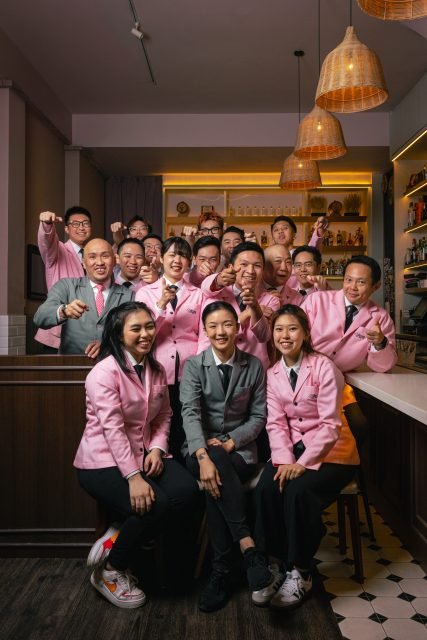How has Singapore’s cocktail scene changed in a decade?
By Nimmi MalhotraAs the city celebrates a decade of cocktail innovation with a festival and guest shifts, the bar industry’s veterans look back at the journey.

Singapore is in the throes of celebrating a decade of bar excellence. Earlier this month, the bar community launched the Singapore Cocktail Takeover across 30 bars, from Singapore’s highest-ranked bar Jigger and Pony to independent bars like White Shades, Barbary Coast, Stay Gold Flamingo, and hotel-based bars like Republic. It was a festival of drinks, guest bar shifts and signature programmes.
With key venues across Singapore celebrating a decade in operation, we find out how the cocktail scene has evolved for the city over the last 10 years.
An unfolding worth celebrating
“In the last decade, Singapore went from having a micro cocktail culture to becoming a cocktail bar community of global influence,” says Guoyi Gan, co-founder and director of Jigger & Pony Group and one of the festival’s initiators and leads, who has been involved since the early days. Her group now runs five bars across town, each with its own distinct DNA.
Echoing her sentiments, Lukas Kaufman, general manager of 28 Hong Kong Street (28HKS), says cocktail culture has undergone a remarkable transformation in the last decade. “A few years ago, finding quality classic cocktails like Negronis, Manhattans, or Daiquiris was a challenge. However, today, there are numerous places, if not hundreds, where one can savour exceptional cocktails.”

Last year alone, Singapore listed eleven bars in Asia’s 50 Best Bars 2023 list, three on the World’s 50 Best Bars 2023 list, and saw Jigger and Pony win the Best International Hotel bar at Tales of the Cocktails held in March 2023.
Kaufman, who has worked for almost seven years at 28HKS, remembers: “No one was juicing fresh juices for their cocktails daily, nor using ‘nice ice’ in their cocktails. Now, it is standard practice.”
“In the early days of 28HKS and the Singapore cocktail scene, sourcing spirits was also a challenge the 28HKS team faced. There was a limited amount of spirits available, and those that were available were very mainstream,” Kaufman says. The lack of specialist craft spirits even led to the creation of Proof and Co, a Singapore-based spirit distribution business which has since gone multinational.
This year marks an important milestone year for many bars. 28 Hong Kong celebrated its 13th birthday this year, but Anti: Dote, Nutmeg and Clove and Manhattan celebrated their 10th anniversaries.
Denise Tan of Bacardí, actively involved in the Singapore Cocktail Takeover, has watched the industry undergo a significant transformation over the decade. “Cocktail drinkers back then were always more intrigued by ‘no-menu’ concepts, where the bartenders would make drinks based on your flavour preferences, with premium ingredients or garnishes,” she recalls. “Classics are revered in the way they should be (they’re classics for a reason), but now, bars are reinventing them with the latest tools and technology so that it still stays true to their DNA, but with the bar’s slight interpretation of it.”
Partner Content
The transformation, says Gan, was achieved through embracing cultures. She believes Singapore’s lack of a definite cocktail culture allowed the community to sponge up all the knowledge available. “The city embraced cocktails so well that the cocktail experience is no longer defined as a dry martini at a five-star hotel. Instead, our story is being written by independent and restaurant bars offering high quality craft drinks.”

“I couldn’t say if we have a ‘Singapore style’ of bartending, but definitely, as a community, we have high-quality cocktail experiences for all occasions,” she says. These range from Japanese bespoke cocktail bars like D.Bespoke, Mixology Salon to the high energy, high volume American bars such as Employees Only, speakeasy bars like Last Word, single spirit focussed concepts of Sugarhall and Cat Bite Club and sustainability-driven Native and Fura.
Singapore’s diversity is embedded in its cocktail culture, with modern techniques and craftsmanship adding to mixologists’ creativity. Bacardí’s Tan remarks on how Korean bartenders influence drinks with ingredients like Korean wild berries and integrate traditional beverages like soju into cocktails. “Everyone is happy to teach and learn from one another, which is also why key events such as bar shows and cocktail festivals are so important to the scene.”
Tan is also keeping close tabs on the evolving bar food programmes which have developed from bar snacks to full-blown food menus. Take Nutmeg and Clove, where the recently engaged new head chef, Bernstein Lim, is delivering modern Asian and Singaporean plates to go with the Singapore-centric cocktails. His menu features dishes like a braised beef cheek Rendang mac and cheese, duck rice arancini served with sambal mayo and a Singaporean staple — Kaya toast reinterpreted as Kaya cream toast.
Nutmeg’s group operations director, Shelley Tai, says it’s tough to predict what’s in store for the next decade. She believes, “Cocktails are just one element of a successful experience. Excellence in service and hospitality play equally vital roles.”
For inspiration, she notes Singapore is now looking beyond the West and reflecting on Asian cultures, history, and ingredients. Tan agrees, drawing attention to the Asian bartending community, who inspire each other, which is increasingly evident in the integration of Southeast Asian and East Asian spirits, flavours, and techniques in the new cocktail offerings.

The next decade
Mindful drinking, lower calorie drinks and sustainability are top of mind as this city-state propels into the next decade. “Many bars are adopting eco-friendly practices and sourcing ingredients locally to reduce their carbon footprint,” says Tan. “A great recent example is the new Gibson menu (Cocktail Supermarket) which showcases humble ingredients like coconut, mango, smoked quail eggs, and longan that we are all familiar with.”
Kaufmann expects bar communities to work more closely with local ingredients and spirits, considering the rising number of craft spirits produced in Asia. Looking to the next decade, he is optimistic. According to him, the cocktail scene is brimming with talented individuals from both local and international backgrounds. “The sources of inspiration are limitless as they travel across the globe to conduct guest shifts, attend master classes, and explore new markets,” he says.
Jigger and Pony’s Gan is excited to see the next generation of bartenders venturing into bar ownerships and creating their own style of bartending just like Jia Wei (formerly of Employees Only Singapore) has done at White Shades. These leaps “influence the next generation of bartenders and drives new blood to pursue their aspirations within our cocktail community,” she says. “This is what I am really excited for in our next decade ahead.”
Related news
Buffalo Trace Distillery grapples with historic flooding




